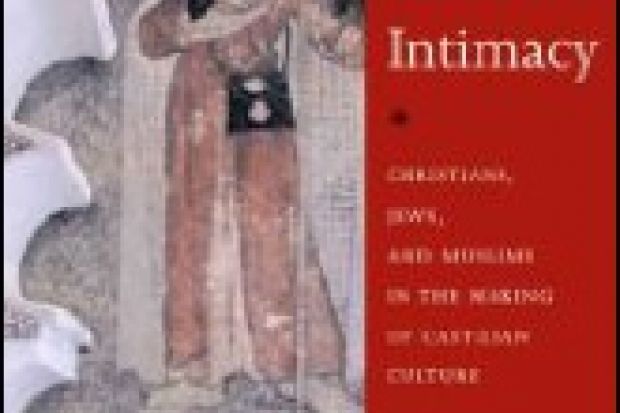The compelling story of the complex entangling of Christian, Muslim and Jewish history, culture, literature and art in medieval Iberia has been told many times before in numerous monographs dedicated to particular centuries, places, texts or material objects. But it has never been told like this. In the richness of the narrative, the profusion of visual detail and the abundance and wide-ranging offering of literary examples, this book evokes the rich history and cultural permeability of medieval Spain like no other. Maria Rosa Menocal, a scholar of medieval Andalusian and Castilian literature, Jerrilynn Dodds, an art historian whose work explores the multicultural language of architectural form in medieval Iberia, and Abigail Krasner Balbale, a cultural historian of the struggles between Islamic and Christian polities of Spain, have woven together the threads of their disciplines - ones that are too often disconnected from each other. The end result is a rich tapestry of a book that brings to vivid life the dialectic of acculturation and assimilation in which medieval Spain's three religious groups were enmeshed. Anyone interested in the complexities of religious, linguistic and cultural struggle, whether past or present, will find this book to be both fascinating and accessible.
The authors have chosen to root their story in the culturally fertile soil of the city of Toledo. Prior to the invasion of the Iberian peninsula in 711 by Umayyad armies, it was the seat of Visigothic kingship and ecclesiastical authority. It then became the thriving, cosmopolitan Tulaytula, an Islamic city whose urban, social and economic dynamism supported the flourishing of Mozarabic Christian and Jewish communities whose fully arabised language, dress and cultural inflections made them full participants in the production of Tulaytula's rich material culture, poetry, music, gardens and scientific and philosophical knowledge.
The Christian conquest of Toledo in 1085 saw the primacy of "cultural praxis" over the ideological purity of faith in the formation of a new Castilian identity out of Toledo's diverse cultural practices, which resulted not only in a reorientation of the relationships of power governing Toledo's three faith groups but also in an opening up of Castilian identity to a new grammar of Arabic language, aesthetics and intellectual formation. By the 14th century, the locus of Castilian culture and power had shifted from Toledo to the reconquered Seville, infusing into the newly Christianised south a Castilian identity, many of whose constituent elements are ironically drawn from the very linguistic, literary and architectural fabric of the conquered culture.
The authors, in this productive bringing together of disciplines and historiographies, break new ground in the study of medieval Castilian hybridity. In their contrapuntal movement between history, artistic form and literature, they are able to show the blurry contingency that characterised the forging of this culture. History cannot be neatly delineated along an ideological trajectory that separates Christians from Muslims and Jews. As the authors deftly show, history itself was subject to revision and manipulation in the interests of religious unity, as demonstrated by 12th-century efforts by the papacy and the Castilian monarchy to suppress the native Toledan Mozarabic church and to disguise internal Christian strife under the garb of a unifying crusading ideology. Neither can architecture or literature be thought to work in ideologically simple or unidirectional ways. Both can be read as conscious tools of power, as well as symptoms of cultural miscegenation.
A perfect emblem for this deeply ambivalent process of historical and cultural transformation is the golden dinar issued by Alfonso X in 1213. An Arabic inscription on the coin, "In the name of the Father, the Son and the Holy Spirit", both evokes and suppresses the Islamic basmala ("In name of God, the Merciful and Compassionate"), while the centre of the coin surrounds Alfonso's name (ALF) and a cross with another Arabic inscription recognising the pope as "imam of the Christian church". This artefact, reproduced in full colour, is indeed the perfect embodiment of the currency of cultural fusion and struggle that is so sensitively and innovatively traced in this book.
The Arts of Intimacy: Christians, Jews and Muslims in the Making of Castilian Culture
By Jerrilynn D. Dodds, Maria Rosa Menocal and Abigail Krasner Balbale
Yale University Press 416pp, £28.00 and £18.99
ISBN 9780300106091 and 142143
Published 29 October 2008
Register to continue
Why register?
- Registration is free and only takes a moment
- Once registered, you can read 3 articles a month
- Sign up for our newsletter
Subscribe
Or subscribe for unlimited access to:
- Unlimited access to news, views, insights & reviews
- Digital editions
- Digital access to THE’s university and college rankings analysis
Already registered or a current subscriber? Login
